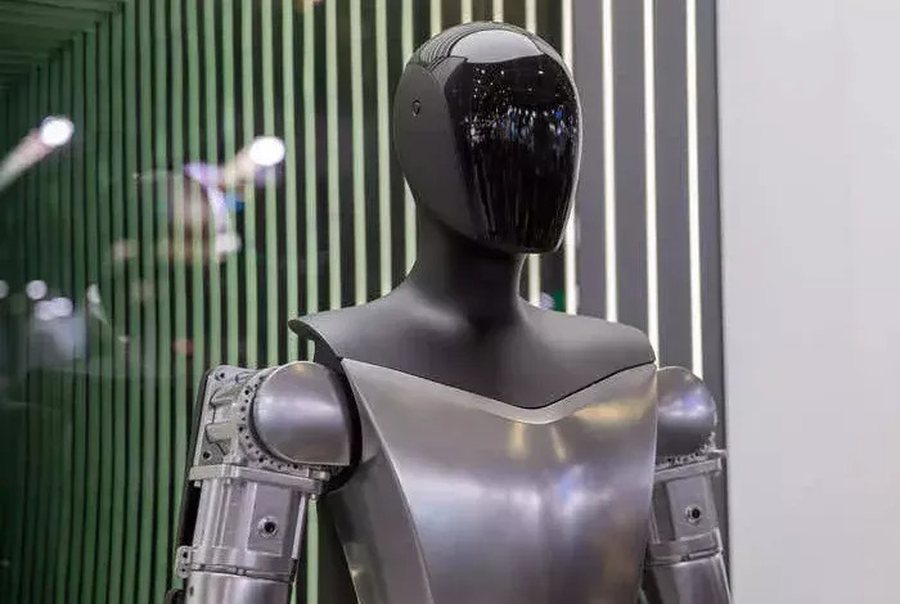China challenges the limits of humanoid robotics - $137 billion in support for startups in this sector

After the "artificial intelligence race," the time has come for humanoid robots. China's humanoid robots aim to boost economic growth and bring advantages to the manufacturing sector.
Through Shanghai startup AgiBot, dozens of humanoid robots are learning how to fold a shirt, make a sandwich and open doors continuously for 17 hours a day. The startup's goal is to generate vast amounts of data to train robots how to navigate the human world. "Just imagine that one day in our robot factory, our robots will assemble themselves," said one of the partners at AgiBot.
The importance of humanoid development was underscored by Chinese President Xi Jinping's visit to the AgiBot facility in Shanghai last month. Chinese authorities have allocated $20 billion to the sector over the past year, and Beijing is creating a $137 billion fund to support startups in fields such as artificial intelligence and robotics, official announcements show.
The sector has seen an explosion of new firms. In 2024, 31 Chinese companies introduced 36 competing humanoid models, compared to eight models from American firms, according to Morgan Stanley.
Much of China’s advantage lies in its dominance of the hardware that makes up a humanoid. The country is capable of producing up to 90% of the components, lowering barriers to entry. As a result, Beijing now accounts for the majority of manufacturers working on such projects globally and dominates the supply chain. Some Chinese startups are selling robots for as little as $13,622.
"You can have a request in the morning and, by the afternoon, it can be fulfilled. This kind of efficiency is really rare and it can be difficult to achieve such a level abroad," say sector experts, as companies would have to import materials from China.
Some analysts predict that humanoids could follow the trajectory of electric vehicles, whose costs have fallen sharply over the past decade as government subsidies have encouraged widespread adoption among the Chinese public. They predict that the cost of AgiBot humanoids will be halved within five years.
Despite concerns about the impact on jobs, Beijing sees technology as key to filling labor shortages in areas such as elderly care, where demand is growing as China's 1.4 billion population ages. China's government released a national plan for elderly care in December that encouraged the integration of robotics and artificial intelligence.
In April, 21 humanoid robots joined thousands of runners in Beijing's Yizhuang Half Marathon, marking the first time the machines have raced alongside humans on a 21km course. For now, most robots struggle to operate. But the half marathon showed that China plans not just to join the humanoid race, but to win it.

IdentiTek announces: Offices in Tirana, Vora, Kamez and Kruja will be closed on May 15-16!
IdentiTek SHA announces that due to the measures taken by the General Directorate of the State Police, regarding the organization of the "European Political......

US budget surplus increases in April - But annual deficit exceeds 1 trillion USD, 23% more than last year
The United States government recorded a budget surplus of $258 billion for April, up 23% or about $49 billion compared to a year earlier. The Treasury......

World leaders congratulate Rama on his victory in the May 11 elections!
World leaders have congratulated the Prime Minister of Albania, Edi Rama, on the victory of the Socialist Party in the May 11 elections. The first to......

Over 248 thousand active businesses in Albania - The largest share is occupied by "natural persons", 13 thousand entities are foreign
The number of active businesses in Albania by the end of 2024 results in 248,737, which are distributed throughout the country. As for their legal form, the......

EU agrees on new sanctions against Russia: Threatens more if Putin rejects ceasefire!
The new EU sanctions package comes a day before a round of direct talks between Ukraine and Russia in Turkey. The European Union has agreed to impose a new......

79,409 envelopes with ballots from abroad are being counted – What are the preliminary results?
The vote counting process for the May 11 parliamentary elections is currently continuing with the counting of envelopes from voters abroad, while the......

Counting of votes within the country ends - CEC: Counting of votes from abroad begins
The Central Election Commission announces that the process of counting and evaluating votes for voting within the territory of Albania has been completed, in......

The US dollar weakens again - What happened in the foreign exchange market today?
The US dollar has registered a slight decline again this Wednesday, being bought today compared to yesterday at 87.2 lekë and being sold at 88.5 lekë......





















